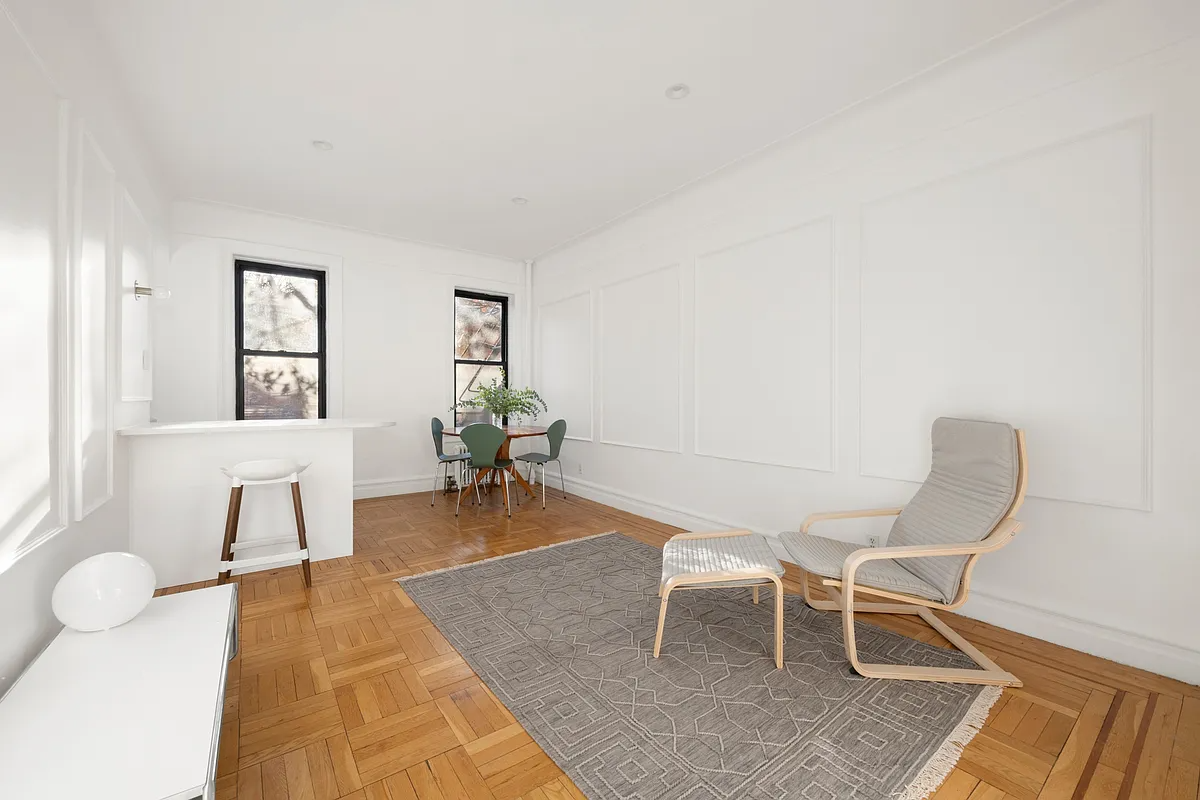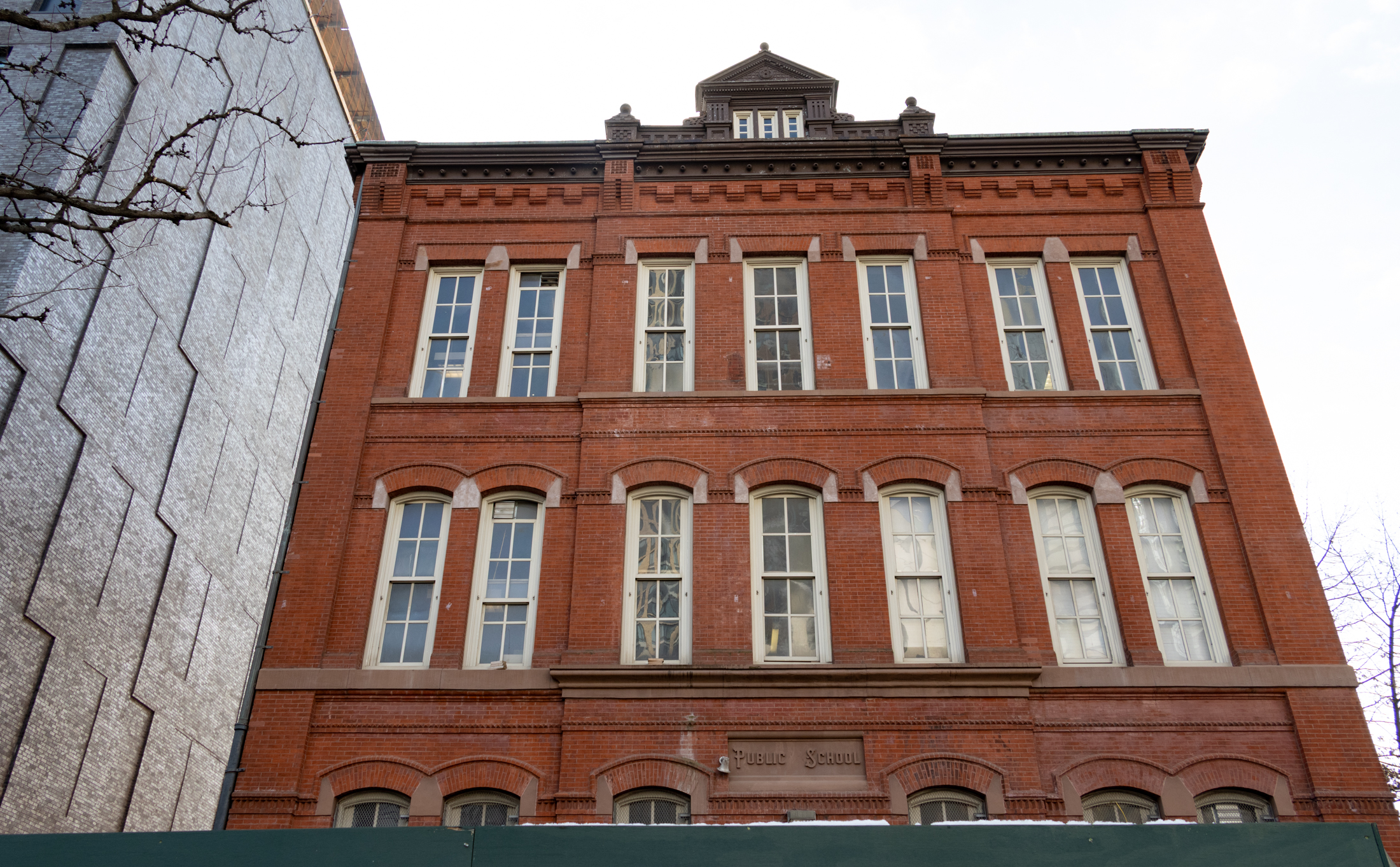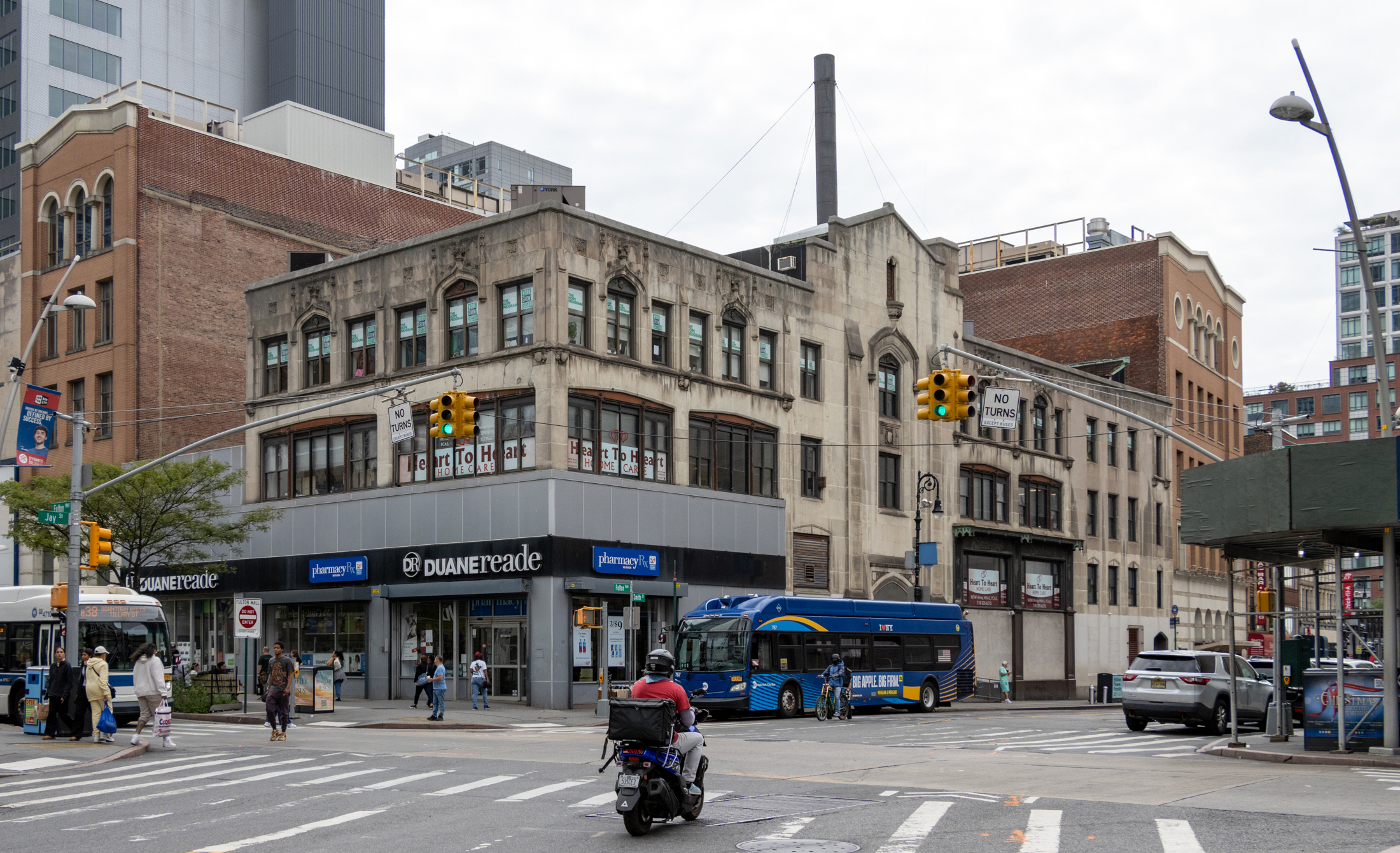House of the Day: 81 Hall Street
You’d be hard-pressed to find a cheaper house in Clinton Hill than 81 Hall Street, a $699,000 blue light special between Myrtle and Park Avenues. The 2,300-square-foot two-family is obviously in dire need of some TLC (the only interior shot available is this one of the ceiling), but perhaps it’ll make sense for some ambitious…


 You’d be hard-pressed to find a cheaper house in Clinton Hill than 81 Hall Street, a $699,000 blue light special between Myrtle and Park Avenues. The 2,300-square-foot two-family is obviously in dire need of some TLC (the only interior shot available is this one of the ceiling), but perhaps it’ll make sense for some ambitious do-it-yourselfer. Alternatively, it’s also significantly underbuilt, so there’s definitely the opportunity for a more ambitious makeover with rooftop and/or rear addition. From what we can tell, the property’s been in the same family for the last three decades or so. It’s not exactly prime Clinton Hill, though, so it might take a little flexibility on the seller’s part to get this one done.
You’d be hard-pressed to find a cheaper house in Clinton Hill than 81 Hall Street, a $699,000 blue light special between Myrtle and Park Avenues. The 2,300-square-foot two-family is obviously in dire need of some TLC (the only interior shot available is this one of the ceiling), but perhaps it’ll make sense for some ambitious do-it-yourselfer. Alternatively, it’s also significantly underbuilt, so there’s definitely the opportunity for a more ambitious makeover with rooftop and/or rear addition. From what we can tell, the property’s been in the same family for the last three decades or so. It’s not exactly prime Clinton Hill, though, so it might take a little flexibility on the seller’s part to get this one done.
81 Hall Street [Century 21] GMAP P*Shark
Photo by Scott Bintner for PropertyShark





this block is actually kind of cute! the street’s block here oddly is 2-way but only a single-lane. It is a great shortcut though (instead of Washington Ave) from Park Avenue as there are no traffic lights on Hall Street all the way to Lafayette. Also not to be overlooked is the reasonable parking garage on this block, which is great for convertibles or precious cars or for me when my window was bashed in and they let me use a spot for only 4 days instead of a month.
They didn’t say the price was 150k
they said 150k LESS.
reading is fun-da-mental!!
70k, and that’s my final offer.
2:31 — I call bullshit — no chance you got anything in South Slope for anything approaching $150K in 2003. An empty lot in Gowanus would have cost 2X that
i’ll offer 400k
$150,000 less than the Clinton Hill house, so $550,000
Clinton Hill, Prospect Heights and some other neihborhoods emerged from the last slump as better neighborhoods- presumably because they got even cheaper, and people bought there and had money to renovate. Yes Park Slope and Brooklyn Heights got more expensive, but prior to the 90s, Clinton Hill ‘prime’ wasn’t even comparable. Fort Greene was still very up and coming. 5th ave and non prime center slope were not nice. people continued to move to these places all through the last slump, and it really cemented the neighborhoods. (And in Park Slope’s case, even moved the desirable part of the hood from 7th to 5th.)
in 2003 150000 lucky you!
2:20: Well, say prices fall to where they were in 2003. In 2003 I bought a fixer-upper this size in lower Park Slope, for $150,000 less. For $150,000 more, I could have bought a fixer-upper this size in the heart of Park Slope.
Point being, IF prices drop, everything down the chain of desirability will fall that much more, as more and more houses that are cheaper and cheaper become available in more-competitive areas.
(I’m not trying to know this part of Clinton Hill, which I don’t know all that well. You could make the same comparison using a lot of different neighborhoods–the same principle applies.)
I guess I’m just thinking, unless I were looking to stay somewhere for a VERY long time (10 years or more), I’d think twice about this right now.